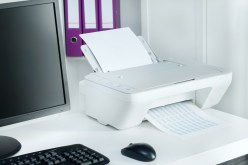The Evolution of AED Technology and Its Life-Saving Prompt Features
Automated External Defibrillators (AEDs) have become crucial tools in saving lives during cardiac emergencies. Over the years, the technology behind AEDs has evolved significantly, particularly in how they communicate with users. One of the most vital advancements is the implementation of prompt features that guide users through the defibrillation process. In this article, we will explore the evolution of AED technology and highlight its life-saving prompt features.
Understanding AED Technology
AEDs are portable devices designed to treat people experiencing sudden cardiac arrest. They work by analyzing a person’s heart rhythm and delivering an electric shock if necessary to restore a normal rhythm. The evolution of AED technology began in the early 1980s, with bulky units primarily used by medical professionals. Today’s AEDs are compact, user-friendly, and equipped with advanced software that enhances their effectiveness during emergencies.
The Role of Audio and Visual Prompts
One of the key innovations in modern AEDs is their use of audio and visual prompts. These features are designed to assist even untrained bystanders in administering life-saving care effectively. When activated, an AED provides clear verbal instructions such as ‘apply pads’ or ‘press shock button’ while also displaying visual cues on a screen. This step-by-step guidance helps eliminate confusion during high-stress situations where every second counts.
Voice Recognition Technology
Recent advancements have seen some AED models incorporate voice recognition technology as part of their prompt systems. This allows users to interact with the device verbally for certain functions such as starting or pausing CPR instructions based on situational needs. By offering this hands-free operation mode, these innovative devices further streamline emergency responses and enhance user confidence.
Training Simulations and Practice Modes
In addition to real-time prompts during emergencies, many modern AED units now include training simulations or practice modes that allow potential responders to familiarize themselves with device operation without the pressure of a live scenario. These modes often feature simulated prompts similar to those found during actual use—providing valuable experience for users before they encounter real-life situations.
Future Trends in AED Prompt Features
As technology continues to advance rapidly, we can expect even more enhancements in AED prompt features going forward. Future trends may include improved integration with smartphone apps for remote diagnostics or additional training resources directly linked via Bluetooth technology. Such innovations would not only assist first responders but could also help increase community awareness about using these vital devices effectively.
In conclusion, automated external defibrillators have come a long way since their inception—transforming from complex machinery into accessible life-saving tools equipped with intuitive prompt systems that empower everyday citizens to act swiftly during cardiac emergencies. Staying informed about these advancements ensures we can all play our part in saving lives when it matters most.
This text was generated using a large language model, and select text has been reviewed and moderated for purposes such as readability.






